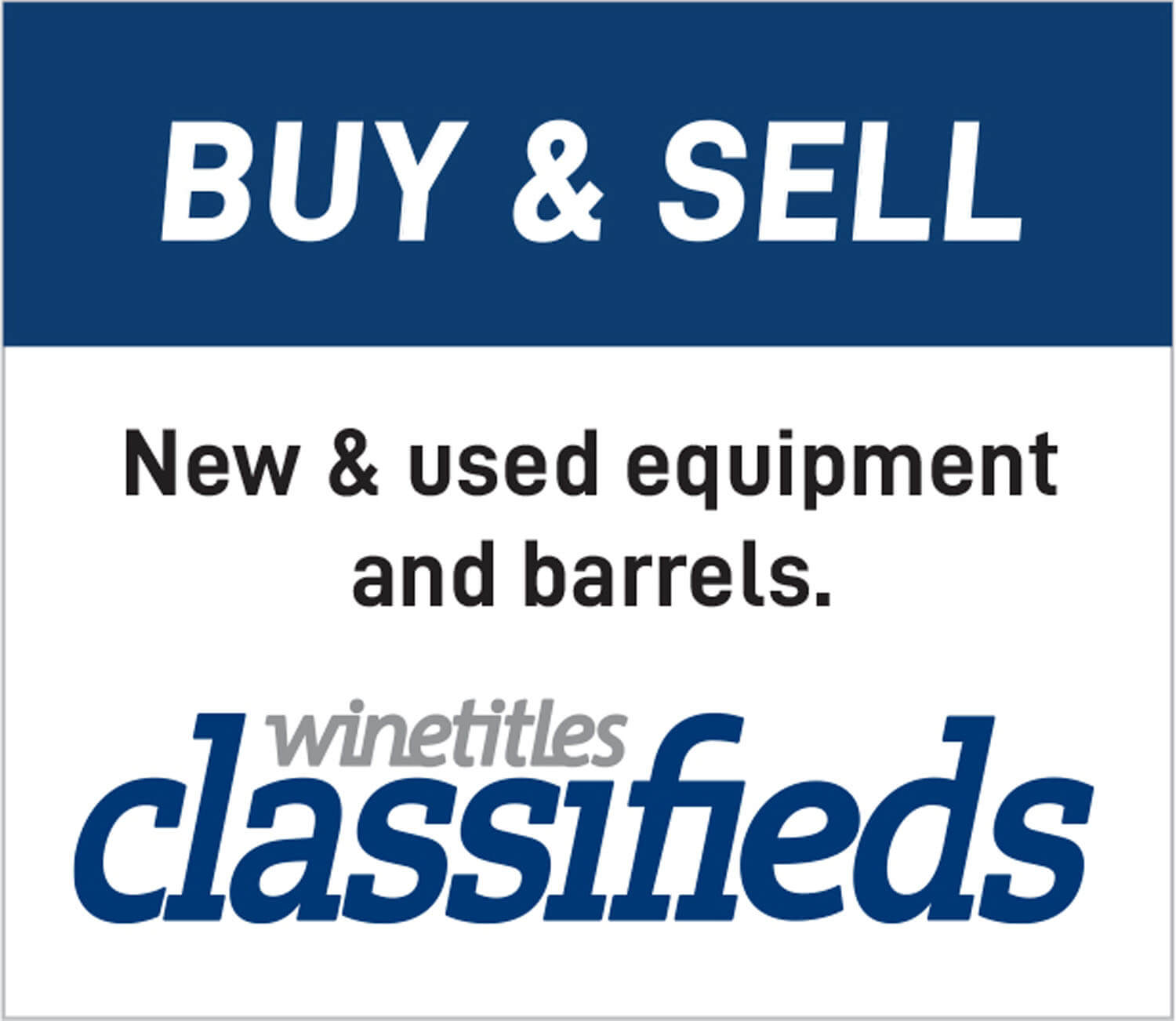Court pays out $1 million to worker for dismissal without reasonable notice
The NSW Supreme Court has awarded over $1 million to an employee who was dismissed without reasonable notice.
Susanna Ma worked as an accounts manager for businesses related to logistics company Expeditors International for 24 years.
Ma was 49 years old when she was dismissed and had an accounting team of more than 12 people reporting to her. MORE
Top tips for keeping your workplace out of danger
FARMING and agriculture are among the most dangerous fields of work in Australia.
But while the wine industry is part of this ‘risky business’, fatalities have remained low with just three deaths reported in 10 years to 2012.
That’s according to independent statutory agency Safe Work Australia which is responsible for improving occupational health and safety and workers’ compensation arrangements across the nation.
While the number of deaths in the wine industry are minor when compared to other industries, there were more than 3000 serious claims accepted for compensation between 2000 and 2012.
Safe Work Australia says the number of claims decreased from a high of 350 in 2005-06 due to greater awareness of health and safety in the workplace.
“Businesses have a legal obligation to health and safety in the workplace to minimise the risk to their workers,” the company tells Grapegrower & Winemaker.
“This includes reducing hazards from plants, machinery, chemicals and manual tasks.
“It’s important that policies are put in place to ensure wine businesses can continue to meet these obligations and operate safely and efficiently.”
RESPONSIBILITIES OF AN EMPLOYER
An employer has the primary duty of care under the Work Health and Safety Act (WHS).
This duty requires the employer to ensure workers are not exposed to health and safety risks arising from the business.
“They must do this by eliminating risks to health or safety or, if this is not practicable, minimising risks as much as possible,” Safe Work Australia says.
In meeting this duty, the employer must ensure the following:
• The provision and maintenance of a working environment that is safe and without risks to health, including safe access to and from the workplace
• The provision and maintenance of plant, structure and systems of work that are safe and do not pose health risks (e.g. providing effective guards on machines and regulating the pace and frequency of work)
• The safe use, handling, storage and transport of plant, structure and substances
• The provision of adequate facilities for the welfare of workers
• The provision of information, instruction, training or supervision to workers
• The health of workers and the conditions of the workplace are monitored to prevent injury or illness.
The WHS laws have been adopted in all jurisdictions except WA and Victoria, though the current laws in these states include similar requirements.
These guidelines apply to crushers or de-stemmer augers, must pumps, bottling equipment and any other plant or chemical used in the workplace.
IDENTIFYING AND PREVENTING A SAFETY HAZARD
Some of the most common hazards faced by workers in vineyards and wineries include operating equipment on hillsides and uneven terrain, pushing and lifting heavy bins, barrels, pumps, hoses or mixers, using pruning shears and picking knives, working with hazardous chemicals and entering confined spaces.
A worker or employer can prevent most workplace injuries and illnesses if they identify workplace hazards and take steps to control them.
This involves eliminating the hazard entirely or minimising the risks as much as possible, which can be done by:
• Selecting appropriate safety features when purchasing or replacing equipment
• Modifying work processes or equipment
• Developing and implementing safe work procedures for hazardous tasks
• Ensuring workers use appropriate protective equipment and follow safe work procedures
PUTTING REGULATIONS INTO PRACTICE
Most Australian wineries and vineyards have standard operating procedures and policies in place to prevent health and safety hazards.
McLaren Vale’s d’Arenberg says the company is committed to providing a safe system of work for its employees and contractors.
As well as having a range of processes in place, a number of employees across all departments have attended training sessions to attain their WH&S Certificate III.
The company continues to host regular internal and external training courses for its employees to ensure they are kept up-to-date with work health and safety practices.
Among a range of health and safety projects already in place at d’Arenberg, the winery has implemented:
• Multiple eye wash and shower stations
• Upgraded stairwells and handrails
• Catwalks over concrete open fermenters
• A dedicated winery chemical mixing shed
• Electric forklifts to reduce emissions in closed areas
• Thermal and fire sensor alarm systems
One of the bigger players in the market, Treasury Wine Estates (TWE), also takes work health and safety seriously.
Corporate affairs manager Sue Rana says traffic, in particular, is a hazard which is often overlooked.
“We have a wide variety of vehicles operating in all parts of our business – tractors, harvesters, trucks, forklifts and cars driven by sales representatives as they visit customers,” she says.
“These vehicles are all essential to our work but can be hazardous without the right training and site management systems.”
Within TWE’s wine production business, all vineyard and winery sites have traffic management plans (TMP) in place.
These plans define how drivers operate vehicles on site and how pedestrians are required to behave when around those vehicles.
“The TMP sets the pathway for vehicles to traverse the site including loading areas for forklifts, pedestrian exclusion zones and crossings and driver safety zones,” Rana says.
PLANNING PROVIDES THE GROUND RULES
“The plan defines the speed limit and location for stop and give-way signs and sets the requirement for pedestrians and drivers when outside their vehicle to wear hi-visibility clothing and safety boots.”
Rana says it is vital to have a traffic standard that everyone on site is aware of and complies with to ensure a safe and productive operation.
“Having all stakeholders involved in the development of these plans increases understanding of our overall traffic safety requirements and commitment to compliance,” she says.
“In developing these plans we consult with our workforce, external carriers who visit our sites and best practice standards in other comparable industries.”
REPORTING AN ACCIDENT, HAZARD OR INJURY
Safe Work Australia says workers should report accidents and other incidents (including things such as near misses) to their supervisor and report a hazard that may endanger others in the future, a problem with equipment, a violation of the regulations or other legal requirements.
Australian government – both the commonwealth and the states and territories – also retain the responsibility for regulating and enforcing all the work health and safety laws operating in their jurisdiction.
The contact details for each state and territory regulators can be found at the link: www.safeworkaustralia.gov.au/sites/swa/about/who-we-work-with/pages/who-we-work-with.
Contact:
Safe Work Australia
P: 1300 551 832
E: info@swa.gov.au
Sue Rana
P: 61 8 8301 5880
E: sue.rana@tweglobal.com
Tash Stoodley
P: 61 8 8329 4825
E: tash@darenberg.com.au
SA winery Kahlon Estates fined $68,000 for workplace safety breaches that cost employee his leg
A SOUTH Australian winery has been fined $68,000 for a workplace safety breach that resulted in an employee’s leg being amputated.
Kahlon Estate’s Wines Pty Ltd pleaded guilty in the Industrial Magistrates Court to failing to ensure the safety of employee Sukhwant Virk in April 2011.
WorkCover rebranded Return To Work as two-year cut-off planned for injured SA workers
Proposed WorkCover changes that scrap medical review panels for injured South Australian workers have won support from unions.
In what is being viewed as the workers’ compensation scheme’s biggest changes in 25 years, the State Government also proposes renaming it Return to Work.
Click here to access full story
Employers: New super guarantee rate now applies
The Australian Taxation Office (ATO) has reminded employers they need to increase the compulsory
minimum super payments they make on behalf of eligible employees.
Emma Haines, ATO Assistant Commissioner said the super guarantee rate increased from 9.25 per cent to
9.5 per cent on 1 July this year.
“Super contributions are calculated on the date you pay your employees. If this date was on 1 July or after,
then you will need to use the new super guarantee rate,” Ms Haines said.
“Employers can use the ATO’s online superannuation guarantee contributions calculator to work out how
much super they must contribute for eligible workers.”
Small businesses are encouraged to use the ATO’s free Small Business Superannuation Clearing House
service to help meet their super guarantee obligations. The Small Business Superannuation Clearing House
lets you pay your superannuation contributions in one transaction, to a single location; helping to make the
process easier.
“If you have 19 employees or fewer, you can use this free service to pay your super contributions in one
transaction,” Ms Haines said.
For more information about super guarantee visit www.ato.gov.au/employersuper or seek help from your
superannuation service provider.
Simplified superannuation – what a super idea for small wineries
The SuperStream standard is part of the federal government’s Super Reform package.
It has been set up to provide a consistent, reliable electronic method of transacting linked data and payments for superannuation.
With a lot of small business small to medium enterprises – including wineries – still managing their superannuation by cheque, paperwork and post the Australian Tax Office (AT0) says its goal is to improve the efficiency of the superannuation system.
By improving the timeliness of processing of rollovers and contributions and reducing the number of lost accounts and unclaimed monies.
ATO says SuperStream is the administration arm of the Federal Government’s Stronger Super reform package.
Its simplified superannuation administration process for employers, with common data standards for contributions across all funds and standard procedures for electronic payments, is expected to both save time and improve fund management.
Which means employers will now manage their super contribution files and transfer their super payments electronically.
SuperStream aims to improve the efficiency of Australia’s superannuation system and provides a new standard for employers when making super contributions.
It requires an employer to send contributions electronically in a standard format with linked data and payments.
Benefits
SuperStream is a major change which brings significant benefits for employers and their employees.
It will simplify the super contribution experience for employers by reducing cost and effort while eliminating unnecessary variation in how contributions are made.
For employees, it will mean better protection of their retirement savings.
START DATES
Employers with 20 or more employees
SuperStream contributions start from 1 July 2014 onwards so ATO says people should start preparing now.
ATO says the earlier you begin your implementation, the sooner you will see the benefits and the less chance you will face any compliance issues.
Make sure you contact your service provider to check their start dates and work out the best time to begin. ATO is promising flexibility on start dates, provided you and your business are doing your best to implement and have a firm plan to do so no later than 30 June 2015.
Small employers with 19 or fewer employees
The SuperStream standard applies from 1 July 2015.
ATO will also provide flexibility for you on your start-up date, provided you do your best to implement after this date and have a firm plan to do so no later than 30 June 2016. If you are ready earlier, there is no need to wait and you can start at a time that suits you. Penalties may apply where an employer fails to comply with SuperStream standards.
Further details are available from: https://www.ato.gov.au/Super/SuperStream/
Wine industry minimum wage rates increase from 1 July 2014
The national minimum wage represents the minimum wage for a full time adult employee, who is not covered by an award or enterprise agreement, and from the first full pay period after 1 July will be entitled to receive $640.90 per week or $16.87 per hour (increase from $622.20 per week or $16.37 per hour). Casual employees receive the minimum hourly rate of $21.09 which includes a 25% casual loading.
Minimum rates of pay for all awards, including the Wine Industry Award 2010, have increased by 3%. The minimum hourly rates payable to an employee classified as “grade one” will be $17.11 per hour (a casual employee is $21.39). Grades 2 to 5 have been increased accordingly. The increases also flow on to junior employees, employees to whom training arrangements apply, employees with a disability and basic piece rates of pay.
Employers should be aware that where an employee’s pay rate currently exceeds the minimum rate payable (i.e. paid in excess of the minimum rate – an over award payment) an employer is not obliged to provide the pay increase to that employee and may absorb the increase into the over award amount. If you are paying an over the award amount and you believe this amount covers the 3% increase, it is advisable to check to make sure this is the case so you can be certain you are not inadvertently underpaying your employees.
Employers must also be aware that the superannuation guarantee charge (SGC) will also increase from 9.25% to 9.5% on and from 1 July 2014.
The South Australian Wine Industry Association (SAWIA) provides updated wage rates and allowance schedules for relevant awards to members and provides information and advice on all payroll related matters. If you require further information please contact the association on 8222 9277 or admin@winesa.asn.au.
Substantial bullying order
With the introduction of bullying legislation this year Swaab Attorneys say the Fair Work Commission was given the power to make “Stop Bullying Orders” to protect employees who have experienced/continue to experience workplace bullying. In its first decision an employee subject to the order has been directed to:
- Have no contact with the co-worker alone.
- Make no comment about the co-worker’s clothes or appearance.
- Refrain from sending any emails or texts to the co-worker except in emergency circumstances.
- “Complete any exercise” at the employer’s premises before 8am.
- Raise no work-related issues without first notifying the employer’s chief operating officer or his subordinate.
Managing such orders will be challenging; particularly when managers want to take leave and will not be there to police it, highlighting the need for prevention through staff training to avoid the potential involvement of the FWC in the workplace.



